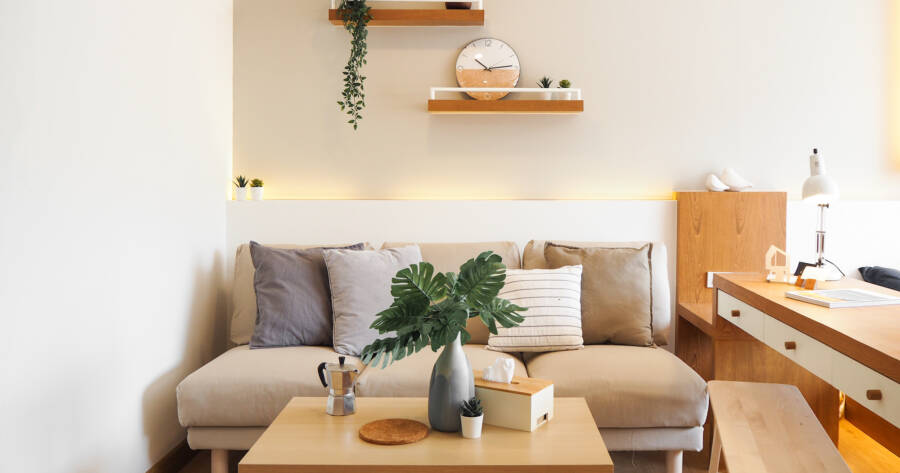Decorating a small space can be a challenge, but with the right furniture choices, it’s possible to create a functional, stylish, and comfortable living environment. If you’re eager to make the most of every square inch, you can learn how to choose furniture for small spaces right now.
Opt for Multi-functional Furniture
One of the top strategies for furnishing small spaces is to choose pieces that serve multiple purposes. Sofa beds, ottomans with storage, extendable dining tables, and fold-down desks are great examples.1 These pieces can transform and adapt to different needs, making them ideal for areas where space is at a premium.
Choose the Right Scale
Furniture that is too large can overwhelm a small space, while pieces that are too small can make it feel sparse. It’s important to select furniture that is proportionate to the room’s size. This might mean opting for a love-seat instead of a full sofa, or a bistro table instead of a large dining table.
When choosing the right scale, consider the room’s dimensions and how the furniture will fit within the layout. Small-scale furniture, such as slim-profile chairs and compact storage units, can make a significant difference. Additionally, selecting pieces with low profiles can create a sense of openness, preventing the space from feeling cramped.
Go Vertical with Storage
Vertical storage solutions, like tall bookcases or wall-mounted shelves, take up less floor space and make the most of your room’s height.2 This approach not only provides ample storage but also draws the eye upward, creating a sense of more space.
Light and Reflective Surfaces
Furniture with light colors and reflective surfaces can make a small space feel larger and more open. Glass or mirrored pieces, such as coffee tables or side tables, can add a sense of depth and brightness to a room. Light-colored furniture, like white or pastel-toned pieces, can also reflect more light, enhancing the airy feel of the space.
Reflective surfaces, such as mirrored cabinets or glossy finishes, can create the illusion of a larger area by bouncing light around the room. Integrating these elements into your design not only elevates the aesthetic but also contributes to a more inviting and expansive atmosphere.
Consider Mobility and Flexibility
Furniture on wheels, or pieces that are easy to move, offer flexibility in small spaces. This adaptability is especially useful when the room needs to serve multiple purposes at different times. Look for lightweight, versatile pieces that can be rearranged as needed.
For example, rolling carts can serve as mobile storage, kitchen islands, or even bar carts, while foldable chairs and tables can be stowed away when not in use. This mobility ensures that your space can quickly adapt to changing needs, whether you’re hosting guests, working from home, or enjoying a quiet evening. Flexible furniture solutions empower you to make the most of your space without feeling restricted.
Find Furniture That Fits
Furnishing a small space requires thoughtful consideration of each piece’s functionality, scale, and aesthetic. By opting for multi-functional, appropriately scaled, vertical, light, and mobile furniture, you can create a living space that is both practical and stylish.
It’s never been easier to find creative solutions and practical tips for choosing the right furniture. With careful planning, even the smallest spaces can be transformed into comfortable, appealing, and enjoyable areas.
